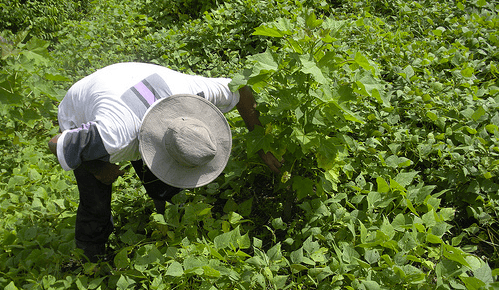
The potential benefits of biofuels for reducing energy dependency on fossil fuel resources, mitigating climate change, or enhancing economic development are nowadays increasingly questioned. The criticism biofuels is based on the economic (e.g., indirect land use and food prices), social (e.g., food security), and environmental risks (e.g., loss of biodiversity and carbon stocks) related to their production.
In a study recently published on Global Change Biology Bioenergy, a team of authors (among them, CMCC researcher A. Trabucco from IAFES Division) investigated the socio-economic potential of Jatropha curcas L. in Tanzania. Jatropha is in fact a plant that has a special place in the debate: as a drought-resistant stem succulent tree, Jatropha was claimed to be able to grow in dry and degraded lands not suitable for food production while not affecting food production. Moreover, converting these degraded areas in Jatropha plantations was assumed not to trigger significant losses of ecosystem carbon stocks. Due to higher oil prices, abundance of labor and suitable land and its stable political climate, Tanzania attracted many investments in Jatropha.
Researchers assessed its potential for Tanzanian farmers by making a greenhouse gas balance and assessing the economic value of the Jatropha activities on regional level while calculating break-even thresholds for yield and seed price.
The abstract of the paper:
Due to higher oil prices, abundance of labor and suitable land and its stable political climate, Tanzania attracted many investments in Jatropha. Although several studies on Jatropha’s economic potential are available, its true economics are still uncertain. This paper aims to add to the growing body of knowledge on the socio-economic performance of the Jatropha system by (i) studying the economic potential (net present value – NPV) of the current most prevailing Jatropha system for Tanzanian farmers and its regional differences, by (ii) making a greenhouse gas (GHG) balance and its economic value of the Jatropha activities on regional level, and by (iii) calculating break-even thresholds for yield and seed price. Therefore, regional yield modeling, regional life-cycle assessment, and NPV calculations based on Monte Carlo simulations, each with its set of assumptions, are combined. This study shows positive economic potential of Jatropha cultivation in most of the Tanzanian regions. However, the results also show that 13 of 20 Tanzanian regions will not attain a net positive GHG balance within 10 years. This indicates that the environmental impacts might be more restrictive for Jatropha’s sustainability potential in Tanzania than the socio-economic potential. These results are based on the combination of three models, which consists of strong interdisciplinary modeling work. However, this modeling also contains simplifications (e.g., no opportunity cost for ‘marginal’ land) and uncertainties (e.g., using globally modeled potential yield estimations), which have to be considered in the interpretation of the results.
Read the integral version of the paper:
Achten W. M. J., Dillen K., Trabucco A., Verbist B., Messemaker L., Muys B., Mathijs E.
The economics and greenhouse gas balance of land conversion to Jatropha: the case of Tanzania
2015, Global Change Biology & Bioenergy, 7(2), 302-315, DOI: 10.1111/gcbb.12160


